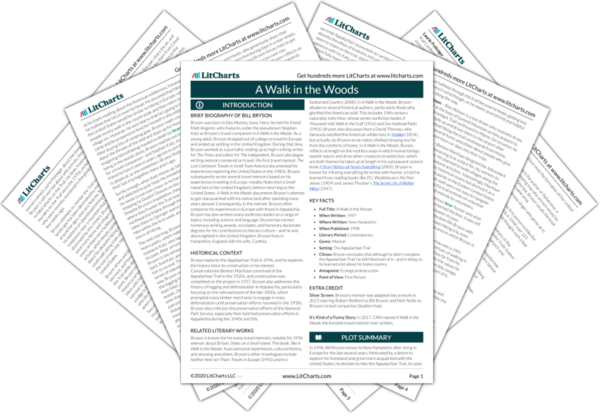Despite the lack of resources for tourists, and despite his disdain for commercial sprawl, Bryson appreciates being able to easily have access to things that make him happy, like restaurants with burgers and a lodge to sleep in. At the same time, Bryson finds it odd that so many Americans he meets gawk at the idea of walking in nature, rather than driving to it. To Bryson, it really seems like they’re missing out, though he understands that not everybody wants to go hiking in the woods for days on end.
